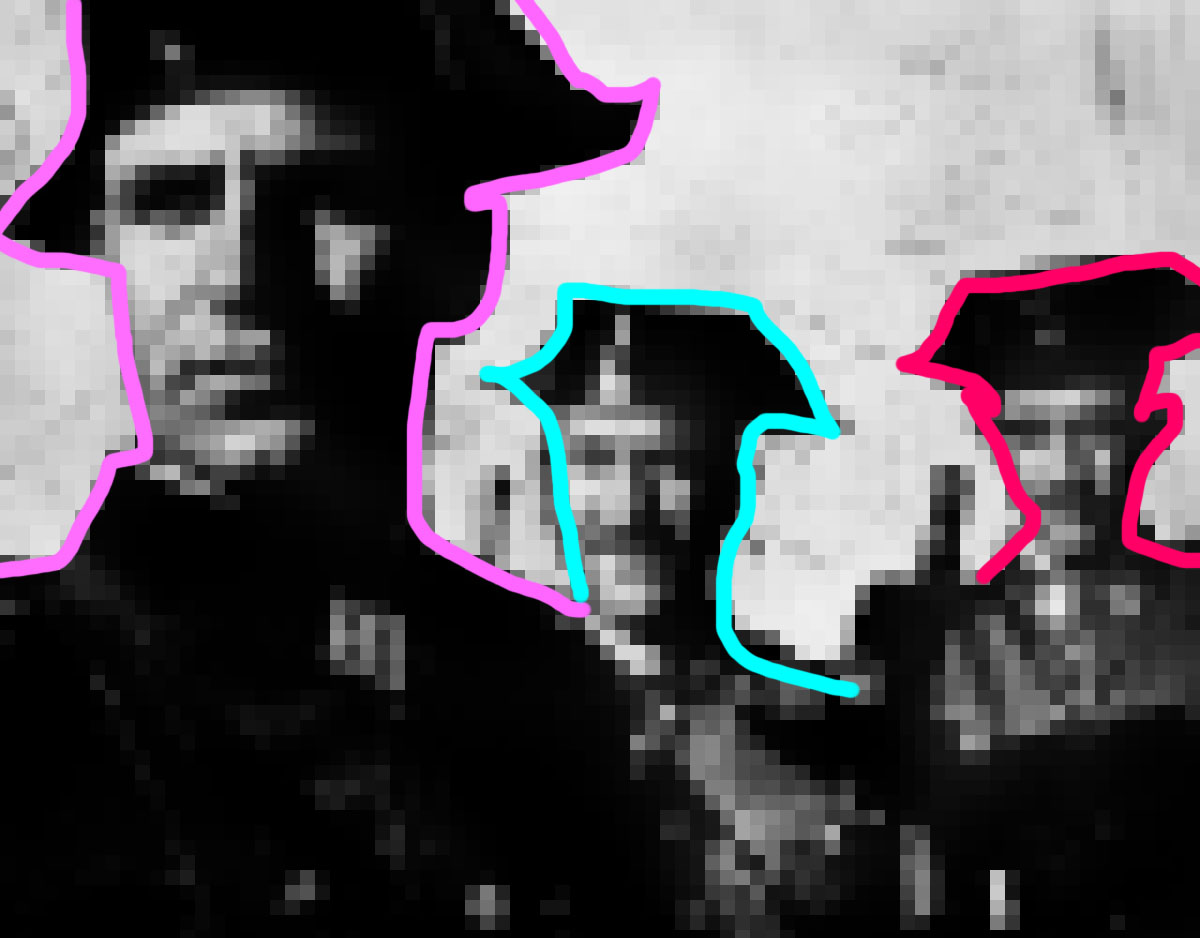Your cart is currently empty!
What Makes a Great Photography Composition? #1 W. Eugene Smith
Analysis of some great compositions:
Why W. Eugene Smith?
Simply put:
I think W. Eugene Smith is one of the greatest photographers who have ever lived:
- His insane work ethic, and his perfectionism.
- His deep humanity for those he photographed. He didn’t censor his photos; they show the deep tragedy of human life. Yet his photos celebrate life and hope.
- His simple, soulful, and timeless compositions. His photos aren’t easy to look at– yet, they are still beautiful (with all the pain).
Let us do a deeper dive into analyzing why his photos are so great:
Part 1: W. Eugene Smith – SPAIN
Video slideshow
GIF
Part 1 GIF:

Part 2 GIF:

Making of:
1. W. Eugene Smith: Spanish Militia Men
Download .ZIP with all JPEG and Photoshop file:
Photo meta data: SPAIN. Extremadura. Province of Caceres. Deleitosa. 1951. Members of the Guardia Civil, the rural police force in charge of patrolling the countryside.
From “Spanish Village” photo-essay.

W. Eugene Smith: One of the greatest photographers who have ever lived.
Let us analyze one of his pictures, ‘Spanish Militia Men’. It has a simple composition– 3 men, at different distances (foreground, middle-ground, background). Good depth.
Generally speaking, multiple-subjects seem to work best in 3 subjects.
Also, great separation between all the three guys (strong ‘figure to ground’)
If we apply ‘Gaussian Blur’ in Photoshop, you can see their clear separation:

See more– the separation of all the subjects:





Now let us analyze the layers. Red is foreground, Cyan is middle-ground, Pink is background:






More analyses in Procreate with ipad:



I think the fact that there is perfect symmetry with 3 people is essential:





Also, note the edge detection:


Principle 1: Does it still work deconstructed?
Principle 1:
If you can destruct/deconstruct a photo with filters, and you can still get a sense of what is going on– it is a strong photograph.
To test this, let us use more Photoshop filters, to continue to de-construct the image:
Half Tone

Crystallize


Find Edges

High pass

Maximum

Minimum

Mosaic


Oil paint

Pointallize






Trace Contour



Noise
By adding noise, you can actually see the photo better:


Dust and Scratches

Note with the Dust and Scratches filter– you can simplify the separation between all the subjects:





3D
3D Bump Map:

3D Normal Map:

Part 2: W. Eugene Smith – HAITI

A haunting image in Haiti — a patient in a mental institution. The anonymity of the photo (not being able to see the subject’s face) heightens the intensity of the picture.
Download Part 2
Download .ZIP with all JPEG and Photoshop file:
GIF

Silhouette
First note the silhouette:






Division of the frame

Also note how the frame is divided:




Edge Detection

With the edge detection:



Part 3: W. Eugene Smith – LEPER PATIENT

Photo: Leper patient and religious medal. From “A man of mercy”, 1954:
Download Part 3
Download .ZIP with all JPEG and Photoshop file:
Why is it a great photo?
To me, the symbolism is this:
The battle between hope (religious medal on his back), and potential death (leprosy — a disease that was once thought to only happen to “sinners”).
GIF

Analysis:
Gaussian Blur:

Curve movement of his body:

His body follows the ‘golden triangle‘ composition:


Now painting in his body gestures– with the polygonal lasso tool in Photoshop, and highlighting certain details:







Further simplified:


With overlays:



Learn more: 7 Lessons W. Eugene Smith Has Taught Me About Street Photography >
















